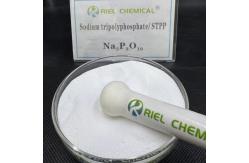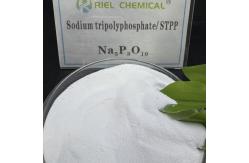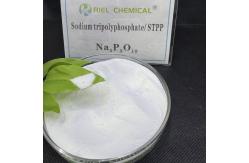White Sodium Tripolyphosphate STPP For Antiscale CAS 7758-29-4
|
|
CAS 7758-29-4 White Powder Sodium Tripolyphosphate For Antiscale
Key attributes
Physical and chemical properties of Sodium Tripolyphosphate
The development prospect of Sodium Tripolyphosphate (STPP) in Asia is influenced by many factors such as economic growth, industrialization, environmental protection policies and market demand in the region. The following is a detailed analysis of its prospects in Asia: 1. Market demand especially in developing countries (such as India, Indonesia, Vietnam, etc.), sodium tripolyphosphate is still widely used as an efficient and economical detergent ingredient. Food processing: With the rapid development of the food processing industry in Asia, the demand for sodium tripolyphosphate as a water retaining agent and quality improver continues to grow, especially in the meat and seafood processing fields. Water treatment: The industrialization process in Asia is accelerating, the demand for industrial water and sewage treatment is increasing, and the application prospect of sodium tripolyphosphate in water treatment is broad. Other industries: The rapid development of textile, ceramics, paper and other industries has also promoted the demand for sodium tripolyphosphate. 2. Impact of environmental protection policies the use of sodium tripolyphosphate is restricted, especially in the field of detergents, and is gradually replaced by environmentally friendly alternatives. Loose policies in developing countries: In India, Southeast Asia and other regions, environmental regulations are relatively loose, the use of sodium tripolyphosphate is still common, but with the increase of environmental awareness, the future may gradually be restricted. Sustainable development trend: Asian countries are gradually attaching importance to sustainable development, and more stringent environmental protection policies may be introduced in the future to promote the research and development and application of sodium tripolyphosphate substitutes. 3. Regional market characteristics China has a huge demand for sodium tripolyphosphate in the fields of detergents, food processing and water treatment. However, with the tightening of environmental protection policies, its use in detergents may be gradually reduced in the future. India: The demand for sodium tripolyphosphate in the Indian market is growing rapidly, especially in the detergent and food processing sectors, but may face adjustment in the future due to environmental pressure. Southeast Asia: The industrialization of Southeast Asian countries such as Vietnam and Indonesia has accelerated, and the demand for sodium tripolyphosphate continues to grow, especially in the field of water treatment and food processing. Japan and South Korea: Japan and South Korea have strict environmental regulations, and the use of sodium tripolyphosphate is gradually decreasing, relying more on environmentally friendly alternatives. 4. Technological progress and innovation Alternative research and development: With the increase of environmental awareness, Asian countries are actively developing and promoting environmentally friendly alternatives to sodium tripolyphosphate, such as zeolite, sodium citrate and so on. 5. Future trends especially in the food processing, water treatment and industrial sectors. Long-term environmental transformation: With the gradual tightening of environmental protection policies and the popularization of sustainable development concepts, the use of sodium tripolyphosphate may gradually decrease, and more environmentally friendly alternatives will be promoted. Regional differentiated development: The market prospects of sodium tripolyphosphate will be differentiated due to the different levels of development in Asia. Developed countries (such as Japan and South Korea) will gradually reduce its use, while developing countries (such as India, Southeast Asia) will still maintain high demand. 6. Challenges and opportunities The gradual tightening of environmental regulations may limit the use of sodium tripolyphosphate. Increased competition from alternatives could affect their market share. Chance: The accelerated industrialization of developing countries in Asia has provided a broad market space for sodium tripolyphosphate. Technological advances and process improvements provide new opportunities for environmentally friendly applications of sodium tripolyphosphate.
1. Detergents and cleaners used to clean machinery and equipment, vehicles, containers, etc., can effectively remove grease and dirt. Hard surface cleaner: Used to clean hard surfaces such as factory floors, walls and pipes, with strong decontamination ability. 2. Water treatment cooling towers and pipes, extending the service life of equipment. Corrosion inhibitor: It can combine with metal ions to prevent corrosion of pipes and equipment. Water softening agent: By chelating calcium and magnesium ions in water, soften water quality and improve the efficiency of industrial water use. 3. Textile industry Bleaching stabilizer: In the bleaching process, it can stabilize the role of bleach and improve the bleaching effect. Dyeing auxiliaries: help dye evenly disperse, improve dyeing quality. 4. Paper industry to improve the uniformity and strength of the paper. Retention agent: Helps fillers and fine fibers distribute evenly in the paper, improving the quality of the paper. 5. Ceramic industry to improve the grinding efficiency of raw materials and reduce energy consumption. Dispersant: improve the fluidity of ceramic slurry, improve product quality. 6. Metal processing and prepare for subsequent processing (such as electroplating, spraying). Rust inhibitor: sodium tripolyphosphate is added to the metal processing liquid to prevent rust on the metal surface. 7. The oil industry to drilling fluids during oil drilling to help stabilize drilling fluid properties. Oil cleaning agent: used to clean oil and sediment in petroleum equipment. 8. Coatings and paints industry sodium tripolyphosphate is used to disperse pigments, improving the uniformity and stability of the product. Stabilizer: Prevents paint and paint from settling during storage. 9. Other industrial applications Anti-scale agent: In the heat exchanger, condenser and other equipment, to prevent the formation of scale. 10. Environmental and alternative trends the application of sodium tripolyphosphate in some industrial areas is gradually limited, and environmentally friendly alternatives (such as zeolite, sodium citrate) are being promoted. However, in some cost-sensitive or environmentally friendly industrial areas, sodium tripolyphosphate still has a high use value.
|
||||||||||||||||||||||||||||||||||||||
| Product Tags: white sodium tripolyphosphate stpp white sodium tri poly phosphate antiscale sodium tripolyphosphate stpp |
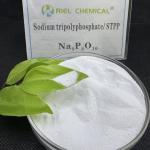
|
96% Highly Purified Sodium Tri Poly Phosphate For Ceramic Dispersing Agent |
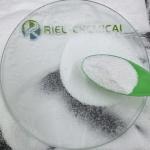
|
Sodium Tripolyphosphate Stpp Phosphate Water Softener Industrial Grade Can Be Divided Into 25KG Supply |
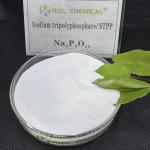
|
96% Industrial Grade Sodium Tripolyphosphate Use Na5P3O10 For Printing Dyeing |
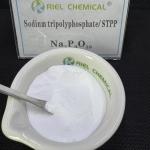
|
CAS 7758-29-4 Na5P3O10 Sodium Tripolyphosphate For Industry Stpp Powder |
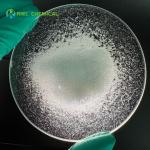
|
Industrial Grade Highly Purified Sodium Tripolyphosphate Powder For Water Treatment |
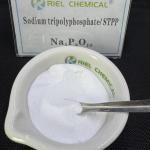
|
Technical Grade 96% Cas 7758-29-4 Sodium Tripolyphosphate STPP For Protect Pipe |

